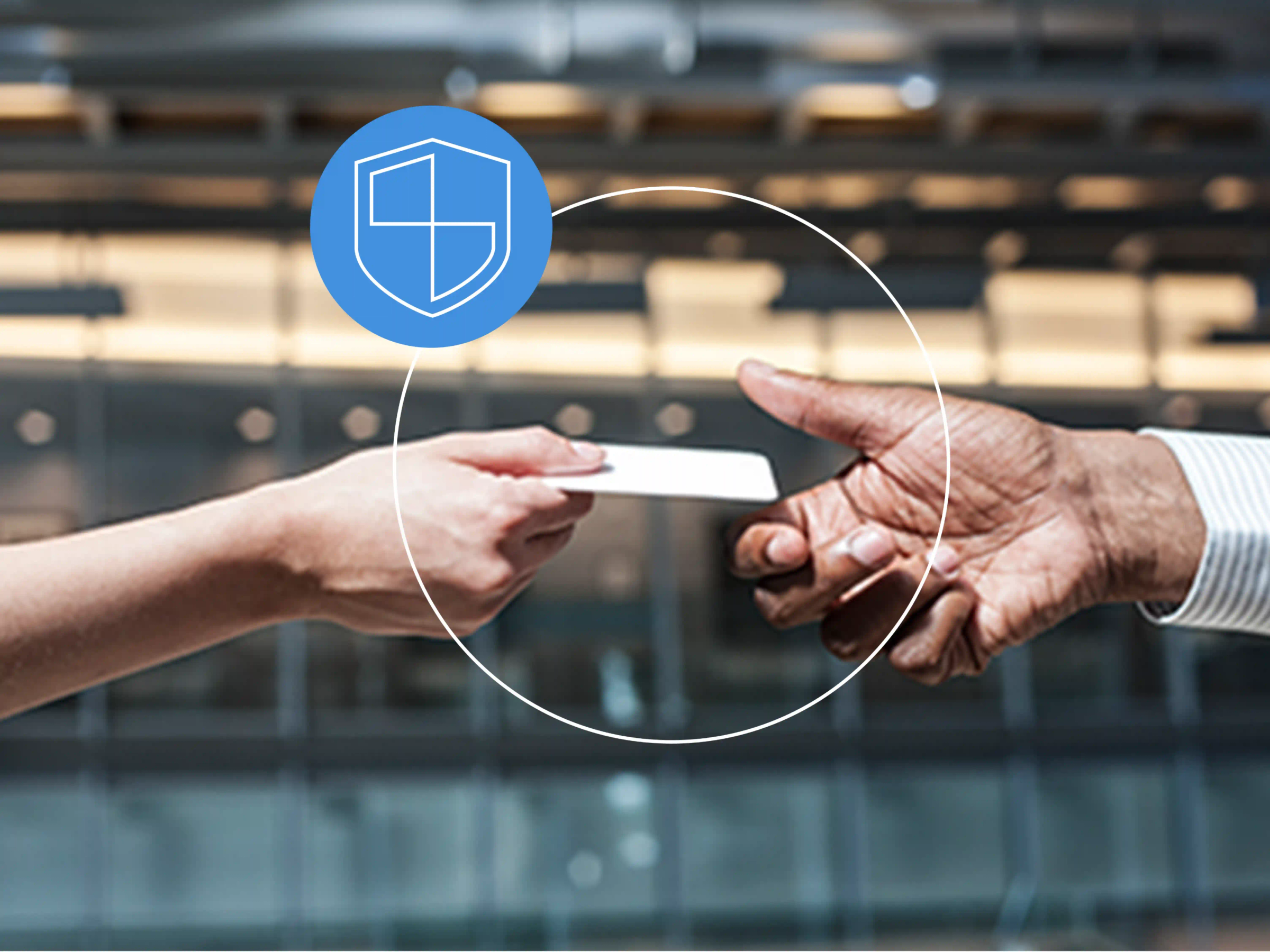Between possible financial losses and damage to client relationships, chargebacks can be a real problem for businesses, and law firms are no different. If you own or manage a law firm, you need to understand how to prevent chargebacks and protect yourself from fraud.
In this article, we will discuss the importance of being prepared for chargebacks and provide advice for avoiding them. By following these guidelines, you can safeguard your finances and maintain your client’s trust.
Schedule a demo to see what LawPay can offer your firm.
Book Now
What is a Credit Card Chargeback?
A credit card chargeback occurs when a credit card holder disputes a charge on their account and requests a refund from the issuing bank. This can be done if they believe the goods or services they purchased were not as described, the dollar amount charged was different than what was agreed to, or if you don’t have permission from the cardholder to charge the card. The issuing bank will then investigate the dispute and, if necessary, reverse the transaction and return the funds to the cardholder's account.
Chargeback v.s. Refund
Chargebacks and refunds are two different processes for reversing a transaction. But despite their similarities, they are not the same thing.
Chargebacks involve a customer disputing a charge on their credit card and asking their bank to intervene to reverse the charge. It’s more formal, and is initiated by the customer and their bank.
Refunds, in contrast, occur when a merchant voluntarily issues a payment to the customer to compensate them for a product or service they’ve returned. This is more informal, and is handled directly between the customer and the merchant.
What Happens When you Receive a Chargeback Notice?
If a client or the cardholder disputes a credit card payment and the transaction proves to be fraudulent, the issuing bank will refund the original value to the cardholder and will begin the standard chargeback process.
Your firm should expect the transaction amount to be taken from your account with an additional chargeback fee, which can be as much as $100. Your sponsoring bank will follow suit and check to see if the chargeback is valid by looking deeper into the transaction in question. If they find any errors with the dispute the issuing bank will be notified and the chargeback will be denied.
If you’re using LawPay to accept legal payments, our software will attempt to notify you of a chargeback via email or phone to expedite the process. Typically, your firm will be asked to respond within a 7-10 day time period, though the exact date will be set by the card-issuing bank.
Why is it Important for Firms to Prevent Chargebacks?
Besides the obvious losses in time and revenue, there are many reasons for firms to make preventing chargebacks a priority.
Among the biggest is the reputational hit that results from chargebacks. To your bank, refunds are not often considered a sign that you’re a financial risk. What’s more, handling a refund doesn’t require a special skill set and can be handled relatively easily.
Chargebacks, on the other hand, are scrutinized much more assiduously. Though chargebacks are not always indications that fraud has occurred, they certainly can be, and thus warrant more attention. Furthermore, handling a chargeback means understanding a complex thicket of regulations, technical procedures, and more, making them more difficult to process than refunds. Chargebacks are also something financial institutions will look at to decide if they want to loan you funds or work with your firm on payment processing.
All things considered, chargebacks are best handled by doing everything you can upfront to avoid them in the first place.
How to Prevent Credit Card Chargebacks
Luckily, there are many things you can do to avoid chargebacks. They tend to fall into two broad categories: crystal-clear communication and procedures that reduce errors.
In this section, we’ll go over various strategies your law firm can put in place for chargeback prevention. Should you nevertheless find yourself facing a chargeback, LawPay has best-in-class chargeback assistance which will help you handle the procedure with confidence.
Make your Firm’s Payment Dispute Process Clear
A client could initiate a chargeback for many different reasons, but they’re more likely to go this route if they can’t figure out how to communicate directly with you. By making your firm’s payment dispute process clear, you provide them with an alternative to seeking a chargeback through their bank.
Here are a few ways you can do that:
Set up an FAQ page for your firm’s payment policies and systems. If a client simply can’t figure out how your firm processes payments, they may opt to use a chargeback for a mistaken or unwanted purchase. As you interact with clients, be cognizant of any complaints, questions, and objections they might raise, especially regarding your payment policies. Collect this information and provide answers on a page that’s easy for them to find and access.
Provide different ways for a client to get in touch. It’s critical to have many different channels of communication open to clients. Just as a client is more likely to use a chargeback if your payment process is opaque, they’re more likely to use a chargeback if they have no idea how best to reach out to you with questions. Make sure your email and a professional phone number are prominently displayed on your website. And, since today’s email auto-responders and chatbots have gotten exceptionally good, there’s no reason you can’t have 24/7 customer service.
Simplify as much of your refund process as you can. The easier a refund is to complete, the more likely a customer is to do a refund rather than a chargeback. These days there are many options for automating processes related to transactions, question-answering, and customer service. Utilizing an industry-leading service like LawPay will make the refund experience as easy and convenient for your clients as possible.
Focus on providing a positive client experience
When clients feel taken care of, they’re happier. And when clients are happier, they’re not only less likely to ask for a refund, they’re also less likely to resort to a chargeback. Bear in mind that people start shopping around for legal services because they’re suing someone, being sued, going through a divorce, or otherwise facing challenges ahead. If you’re the steady, reassuring hand they turn to during a tempestuous point in their lives, they’ll remember that.
Here are some excellent strategies for taking care of your customers:
Simplify and streamline the onboarding process. Do everything you can to make interacting with your firm straightforward while also protecting yourself from chargebacks in the future. This could mean using standardized documentation such as LawPay’s credit card authorization form, collecting signatures or initials next to your cancellation and refund policies in your client agreements, obtaining authorization from the cardholder for the specific dollar amount being charged, keeping careful records anytime you accept payment over the phone or from a 3rd party (such as a relative), and being very proactive about communicating with your client throughout the process.
If they’re crystal clear about expectations and what they’re being charged for, they’re less likely to initiate a chargeback. And if you’ve been consistent about collecting signatures and keeping your paperwork in order, you’ll have a line of defense if they do initiate a chargeback.
Utilize ‘the human touch’ by reaching out after a client consultation. In an increasingly digital world, it’s easy to feel like another data point, another entry in a spreadsheet. Make your customers feel seen by sending a friendly ‘thank you’ after they elicit your services.
Check the description for your merchant account and make sure it’s accurate. Make sure you understand how your company is listed on bank statements. If a customer doesn’t recognize your business’s name, they might erroneously assume a fraud has occurred and seek a chargeback.
Manage recurring payments
More and more businesses are opting for recurring payments because they offer ease and convenience for both merchants and customers. But they also have greater chargeback risks.
When a person becomes a long-time customer through recurring payments, they’re going to expect you to be more transparent and responsive. Answer their questions as quickly and honestly as possible, and be proactive in reaching out to them if there is an issue.
Also, try to make adjusting their subscription a breeze. This may not always be possible because recurring payments are sometimes created as part of a payment agreement. Nevertheless, keep lines of communication open so that your clients feel comfortable reaching out if any changes need to be (and can be) made.
Keep proof of work documentation
To protect yourself in the event of a chargeback, it is critical to hold on to proof of work or services performed. This should include any payment authorization or payment communication from the client. Be aware that you will not be asked to disclose sensitive client information or details on a particular matter. It's also important to remember that your client is declining payment to your firm, so the bank is already aware you are working with that particular cardholder.
Fraud Prevention Tools
Of course, one key reason a client requests chargebacks is actual fraud. If a client sees purchases they know they didn’t make, they’ll reach out to the bank to get the charges reversed. And if a fraudster is buying your services with someone else’s financial information, that could negatively impact your firm.
For these and other reasons, it pays to do everything you can to ensure a high level of payment security. A good way to do this is to avail yourself of the tools provided by credit card networks. These include various ways of verifying that a shopper’s identity is authentic, such as the Visa Account Updater, 32D Secure 2.0 (3DS2), the CVV codes on the back of credit cards, and the Address Verification Service (AVS). You could use one, two, or all of these simultaneously to ensure that the person you’re accepting payment from is actually the person they claim to be. Perhaps the simplest way of integrating these security measures is to use a payments processor like LawPay that includes them natively.
Schedule a demo to see what LawPay can offer your firm.
Book Now
Final Notes
As part of our service, LawPay is available to support your firm in its efforts to win a chargeback dispute. We are also happy to review your chargeback process and make recommendations to avoid potential client dispute situations. Our goal is to help you and your clients have a positive payment experience. Reach out today to get started with LawPay.
About the author

Trent Fowler
